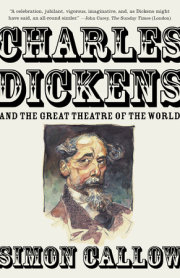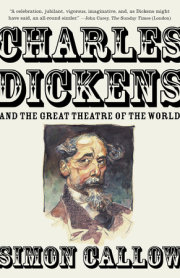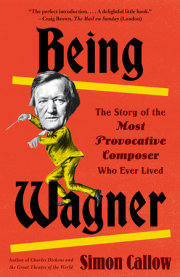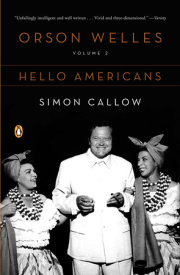FOREWARD
When he was a young graduate, Michael Slater, the current doyen of Dickens studies, was asked by his tutors at Oxford what he wanted to study for his PhD. When he said ‘Dickens’, they looked at him aghast. Dickens was simply not part of the accepted canon. After vainly trying to dissuade him, they sent him off to Another University for advice and guidance, after which he then commenced his life’s work, to the benefit of all Dickensians everywhere. Half a century later, the situation is entirely reversed: there is a non-stop tsunami of scholarly studies of Dickens from every possible angle. Dickens and Women, Dickens and Children, Dickens and Food, Dickens and Drink, Dickens and the Law, Dickens and Railways, Dickens and the Americans, Dickens and Europe, Dickens and Homosexuality, Dickens and Magic, Dickens and Mesmerism, Dickens and Art, Dickens and Stenography, Dickens and Publishing. As yet, I have not come across a book on Dickens and Dogs, but it can only be a matter of time: a perfectly interesting and not especially slim volume is just waiting to be written. The multifariousness of Dickens makes him virtually inexhaustible as a subject. These studies have run alongside and to some extent been the outcrop of the huge transformation in academic attitudes to Dickens, particularly with regard to the later novels, which were largely dismissed by critical opinion in his lifetime.
There has also been a magnificent procession of major biographies, from Edgar Johnson in the 1950s to Fred Kaplan in the 1980s, Peter Ackroyd’s sublime act of creative self-identification with Dickens in the 1990s, Michael Slater’s revelatory account of, as he puts it, a life defined by writing, to the most recent, Claire Tomalin’s vivid survey of the Life and Work. Dickens has never been more present. So it takes some cheek on the part of one who is by no means a Dickens scholar to offer yet one more account of the man who called himself Albion’s Sparkler. I dare to do so because my relationship to the great man is a little different from anyone else’s. In an exchange that Dickens himself might have relished, the late dramatist Pam Gems went to see one of her plays performed by that fine actor Warren Mitchell. She noticed that one or two lines in the text had changed. Reproached by her, Mitchell replied, ‘Pam, Pam: you only wrote ’im. I’ve
been ’im.’ I have, over the years, been Dickens in various manifestations, from reconstructions of the Public Readings on television, to one of Dr Who’s helpers; I have also been involved in telling his life story, through the wonderful play that Peter Ackroyd wrote for me,
The Mystery of Charles Dickens. Presently I am involved in performing two of his monologues,
Dr Marigold and Mr Chops, and his solo version of
A Christmas Carol. In order to do all of this, I have needed to find out what it was like to be him, and what it was like to be around him. I have immersed myself, on an almost daily basis, over a period of nearly fifteen years, in the minutiae of his life, above all seeking out personal reminiscences and his own utterances rather than exegetic texts.
Over the years, since a thoughtful grandmother thrust a copy of
The Pickwick Papers into my hands as I repined in the itchy agony of chicken pox – from the moment I started reading, I never itched again – I have read virtually everything he has written, with the mixture of joy and frustration that all readers of Dickens except for fundamentalists experience. But it is not the writing that is the focus of the present book: when the content of a novel is autobiographical (which to one degree or another many of them are), I have of course discussed it, but my primary concern has always been to convey the flavour of one of the most remarkable men ever to walk the earth: vivacious, charismatic, compassionate, dark, dazzling, generous, destructive, profound, sentimental – human through and through, an inspiration and a bafflement.
Inevitably, as the title of the book declares, I have focused on the theatre in Dickens’s life. In recent years there has been an exceptional sequence of books that analyse the influence of the theatre on Dickens’s work in subtle and deeply illuminating ways – books by Robert Garis, Paul Schlicke, Deborah Vlock, Malcolm Andrews, John Glavin. Again, this is not the territory of the present book, which looks at the histrionic imperative so deeply rooted in Dickens, but beyond that is interested in Dickens on the stage of life, as he would certainly have thought of it. I have always been concerned with the peculiar quality of his personality, described with remarkable consistency by his contemporaries as theatrical. The books, therefore, to which I have had most recourse are the ones that have given me the man as he lived and breathed: Forster’s richly moving three-volume
Life, the very first biography, written by the man who knew him better than anyone else, and whose perpetual sense of astonishment at his friend sings out on every page; the glorious twelve-volume
Pilgrim Edition of the Letters, wherein Dickens speaks again, fresh, funny, tortured by turns; the
Speeches, edited by Fielding, all improvised but faithfully transcribed to give a unique sense of Dickens the public man; Philip Collins’s wonderful collection of reminiscences and interviews; and the superb and constantly illuminating chronology by Norman Page, which in its dry way gives as well as anything written a sense of the sheer amount of abundant living that Dickens crammed into his rather short life. In the end, of course, this biography, as with any other, is a selection of the man: playing Dickens, and performing his work, has been like standing in front of a blazing fire. If I can convey any sense of that, I will have succeeded in my aim.
Copyright © 2012 by Simon Callow. All rights reserved. No part of this excerpt may be reproduced or reprinted without permission in writing from the publisher.













